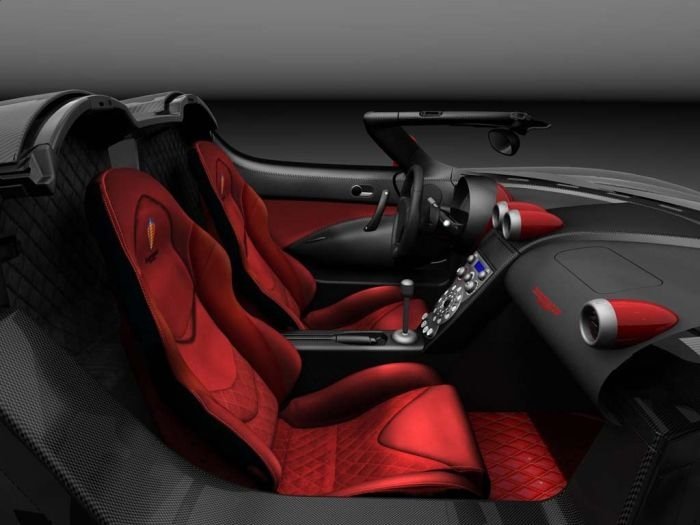|
|
World's Fastest Cars 2010
|
The Veyron's brakes use cross drilled, radially vented carbon fibre reinforced silicon carbide (C/SiC) composite discs, manufactured by SGL Carbon, which have a much greater resistance to brake fade when compared with conventional cast iron discs. The lightweight aluminium alloy monobloc brake calipers are made by AP Racing; the fronts have eight titanium pistons and the rear calipers have six pistons. Bugatti claims maximum deceleration of 1.3 g on road tyres. As an added safety feature, in the event of brake failure, an anti-lock braking system (ABS) has also been installed on the handbrake.
Prototypes have been subjected to repeated 1.0 g braking from 312 km/h (194 mph) to 80 km/h (50 mph) without fade. With the car's acceleration from 80 km/h (50 mph) to 312 km/h (194 mph), that test can be performed every 22 seconds. At speeds above 200 km/h (120 mph), the rear wing also acts as an airbrake, snapping to a 55-degree angle in 0.4 seconds once brakes are applied, providing an additional 0.68 g (6.66 m/s²) of deceleration (equivalent to the stopping power of an ordinary hatchback). Bugatti claims the Veyron will brake from 400 km/h (250 mph) to a standstill in less than 10 seconds, though in this time you will have covered a third of a mile.
|
|









